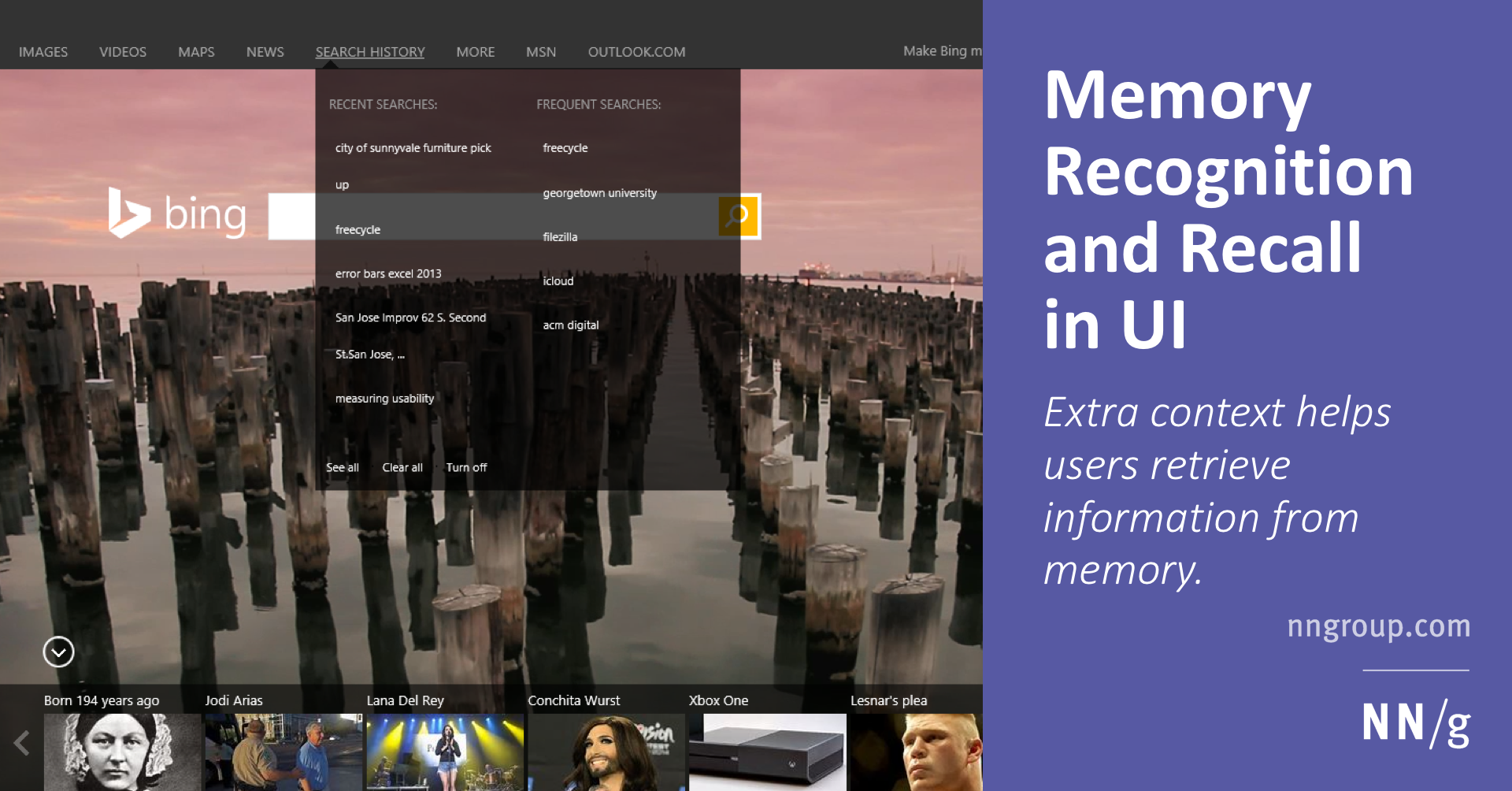Memory Recognition and Recall in User Interfaces

Recognition and Recall in User Interfaces
Summary
This article discusses the concepts of recognition and recall in user interfaces, and the preference for recognition over recall in interface design. Recognition refers to the ability to identify or acknowledge something previously encountered, while recall involves retrieving information from memory without any external cues. The article highlights how recognition is generally easier and more accurate than recall, and why it is important for user interfaces to prioritize recognition to improve usability.
Two Types of Memory Retrieval: Recognition and Recall
Psychologists differentiate between recognition and recall as two distinct processes in memory retrieval. Recognition involves the ability to identify or remember something when it is presented again, even if there are cues or context to aid recognition. On the other hand, recall refers to the process of retrieving information from memory without any external prompts or aids.
Recognition's Superiority over Recall
Recognition is generally considered superior to recall due to the additional context it provides, making it easier for users to retrieve information from memory. In the example of meeting someone on the street, recognizing a familiar face is relatively effortless, while recalling their name requires more cognitive effort. Recognition mitigates the need for users to actively search their memory for information, as the presence of cues or options helps trigger familiarity.
Recognition in User Interface Design
One of the top 10 usability heuristics advises designers to prioritize recognition over recall when creating user interfaces. By presenting users with options or visual cues, designers can facilitate recognition and reduce the cognitive load associated with recall. Using clear labels, familiar icons, and intuitive navigation can also enhance recognition and improve the user experience.
Conclusion
Recognition is generally easier and more accurate than recall when it comes to memory retrieval. In user interface design, promoting recognition over recall can enhance usability and user experience. By incorporating visual cues, clear labels, and intuitive navigation, designers can simplify users' interaction with interfaces and reduce cognitive load.